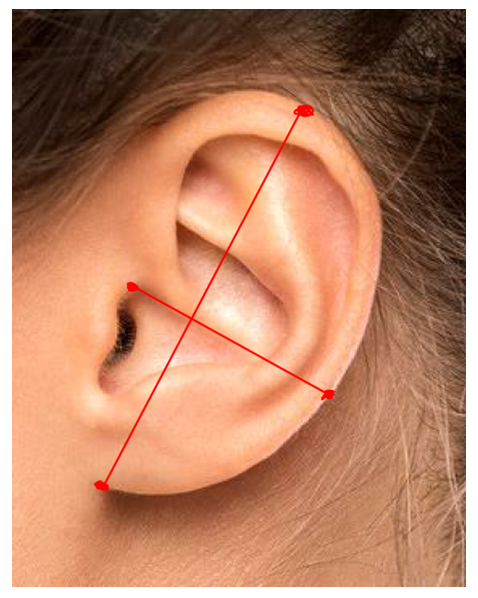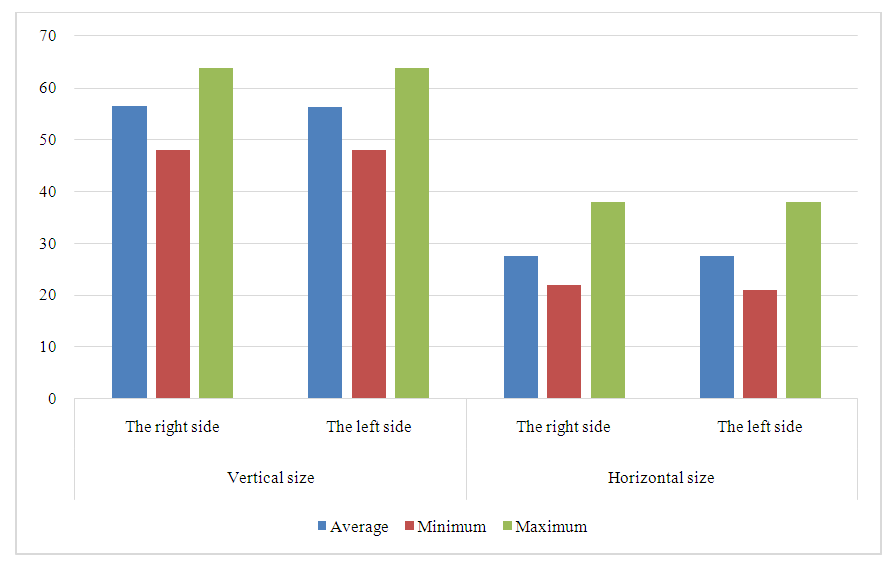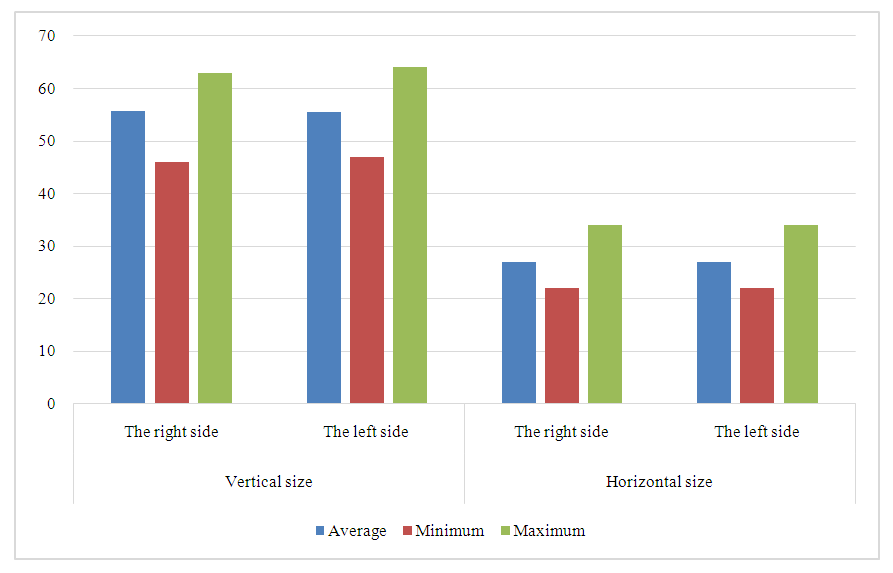-
Paper Information
- Next Paper
- Previous Paper
- Paper Submission
-
Journal Information
- About This Journal
- Editorial Board
- Current Issue
- Archive
- Author Guidelines
- Contact Us
American Journal of Medicine and Medical Sciences
p-ISSN: 2165-901X e-ISSN: 2165-9036
2024; 14(9): 2355-2357
doi:10.5923/j.ajmms.20241409.49
Received: Aug. 22, 2024; Accepted: Sep. 10, 2024; Published: Sep. 28, 2024

Age-Related Features of the Size of the Auricle: Comparative Study of Vertical and Horizontal Parameters in Children
Abdulxakimov Arsen Renatovich1, Fattaxov Nusratullo Xamidullayevich1, Xomidchonova Shaxzoda Xasanzoda2, Xolikov Bekzod Murtazo Ugli1
1Department of Faculty and Hospital Surgery, Fergana Medical Institute of Public Health, Fergana, Uzbekistan
2Department of Histology and Biology, Fergana Medical Institute of Public Health, Fergana, Uzbekistan
Correspondence to: Abdulxakimov Arsen Renatovich, Department of Faculty and Hospital Surgery, Fergana Medical Institute of Public Health, Fergana, Uzbekistan.
| Email: |  |
Copyright © 2024 The Author(s). Published by Scientific & Academic Publishing.
This work is licensed under the Creative Commons Attribution International License (CC BY).
http://creativecommons.org/licenses/by/4.0/

The article examines the age-related features of the vertical and horizontal dimensions of the auricle in children. The study was conducted on a sample of 244 schoolchildren, which revealed minor differences between the right and left ears in both boys and girls. The data obtained indicate minimal sexual differences in the size of the auricle, where the differences between the right and left sides are 0.1–0.15% [1,2,3].
Keywords: Auricle, Size, Gender, Children, Morphometric, Age characteristics
Cite this paper: Abdulxakimov Arsen Renatovich, Fattaxov Nusratullo Xamidullayevich, Xomidchonova Shaxzoda Xasanzoda, Xolikov Bekzod Murtazo Ugli, Age-Related Features of the Size of the Auricle: Comparative Study of Vertical and Horizontal Parameters in Children, American Journal of Medicine and Medical Sciences, Vol. 14 No. 9, 2024, pp. 2355-2357. doi: 10.5923/j.ajmms.20241409.49.
1. Introduction
- The relevance of the study of the vertical and horizontal dimensions of the auricle in children is due to the importance of studying the age and anatomical features of the development of the hearing organ [4,5]. The formation of the auricle is closely related to the function of hearing, and any deviations in its size can affect the auditory perception and overall development of the child. In the context of modern methods of diagnosis and prevention of ear diseases, the study of the morphometric parameters of the auricle can contribute to the early detection of pathologies, as well as help determine the normative indicators of development in different age groups. Studying the vertical and horizontal dimensions of the auricle in children is also important for the development of adapted medical devices such as hearing aids and ear prostheses [6]. Considering that the proper functioning of the auditory system is crucial for the social adaptation and education of a child, this study has not only scientific, but also practical significance for pediatrics, otorhinolaryngology and audiology [7,8,9].The materials and methods of the study were the results of measurements of the vertical and horizontal dimensions of the auricle in 244 healthy children of schoolchildren of different sexes and age groups.
2. Result and Discussion
- Examination of the auricles and measurement of vertical and horizontal dimensions, the direction of the measurement lines is shown in Figure 1 [10].
 | Figure 1. Points and directions of measurements of the auricle |
 | Figure 2. The sizes of the auricles of children-boys of the studied sample |
 | Figure 3. The sizes of the auricles of children-girls of the studied sample |
3. Conclusions
- The study showed that the vertical and horizontal dimensions of the auricle in children vary depending on gender, but the differences between the right and left auricles are minimal. In boys, the average height of the right ear is 56.54 mm, and the left ear is 56.47 mm, which differs by only 0.1%. The average width of the right ear is 27.62 mm, and the left one is 27.58 mm, also with a difference of 0.1%. In girls, the average height of the right ear is 55.61 mm, and the left ear is 55.55 mm, with a difference of 0.1%, and the width of the right ear is 26.93 mm, while the left ear is 26.89 mm, which is a difference of 0.15%. These data indicate differences between the ears of children, which are about 0.1–0.15%.
 Abstract
Abstract Reference
Reference Full-Text PDF
Full-Text PDF Full-text HTML
Full-text HTML